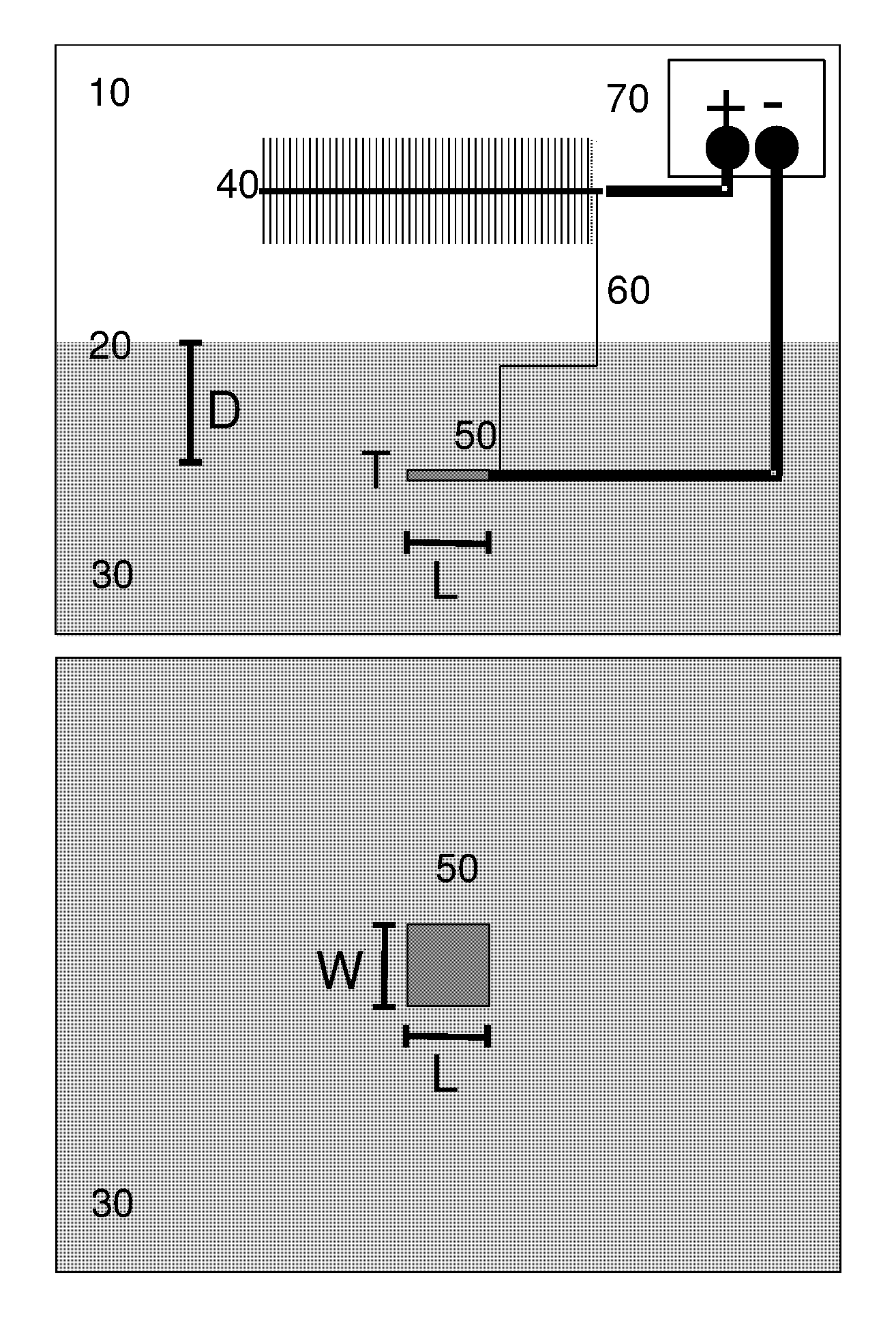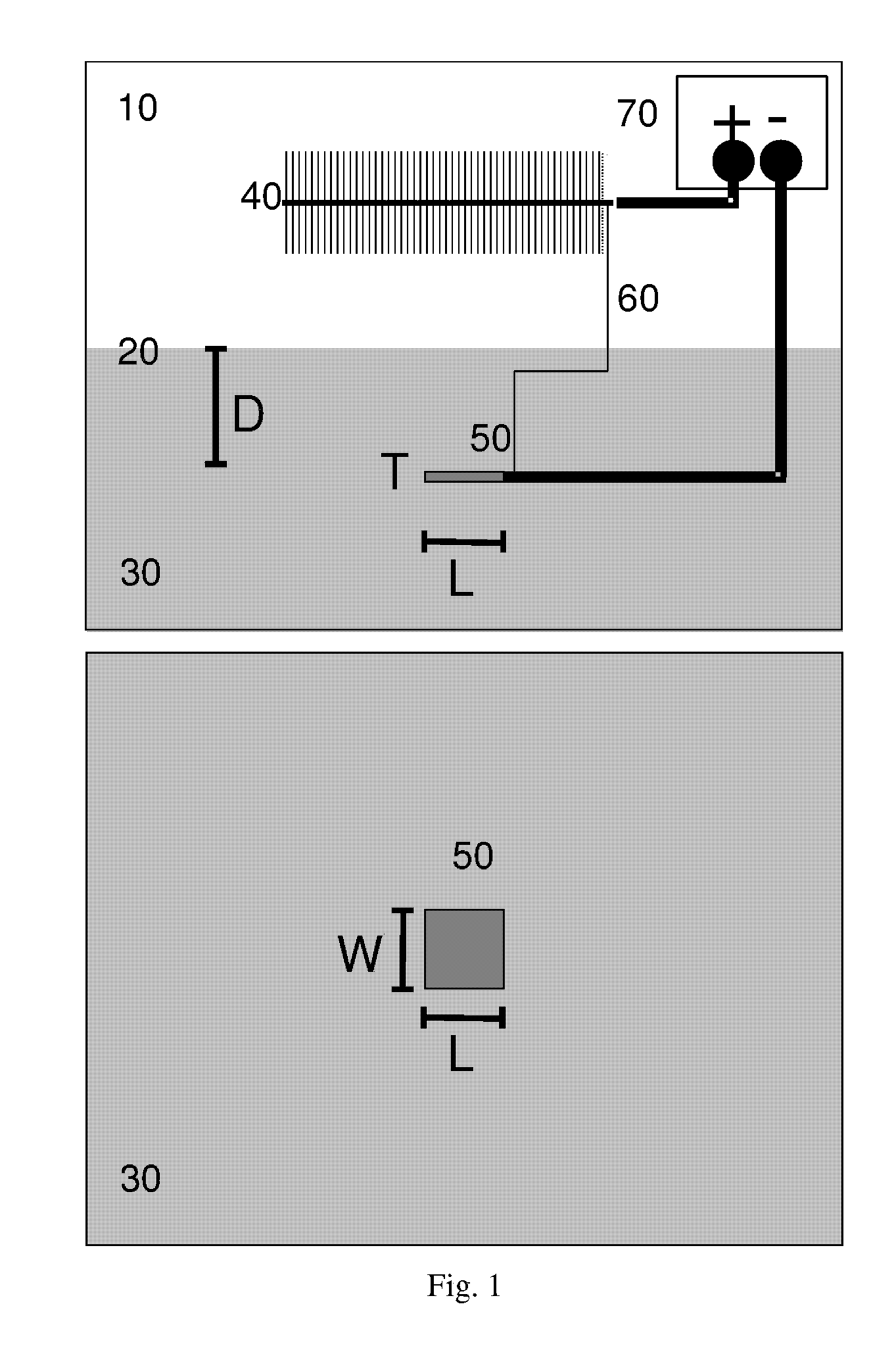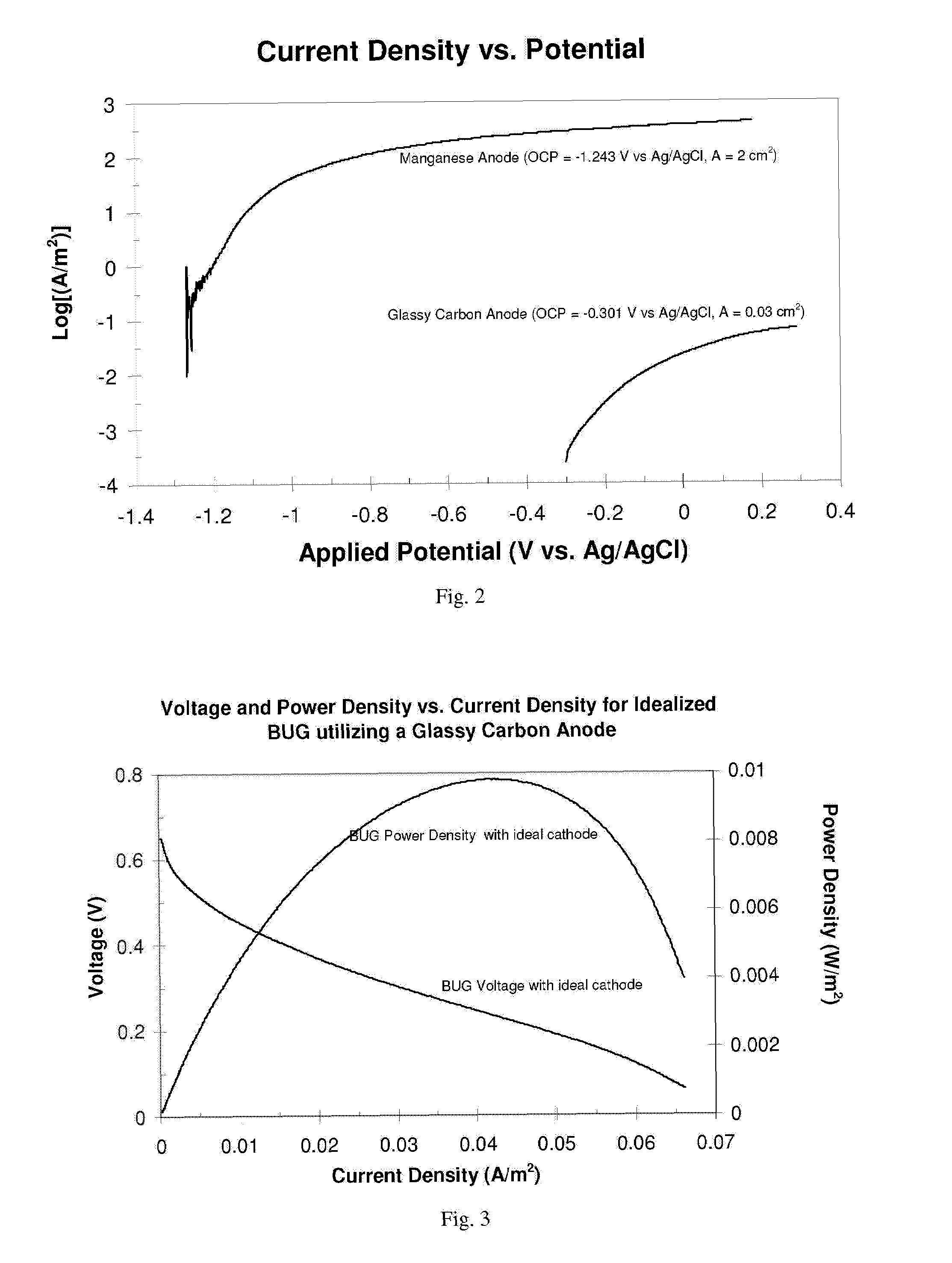Apparatus equipped with metallic manganese anode for generating power from voltage gradients at the sediment-water interface
a technology of metallic manganese anodes and anodes, which is applied in the direction of indirect fuel cells, non-aqueous electrolyte cells, cell components, etc., can solve the problem of limiting the period of time over which a sensor or instrument can operate, and achieve the effect of reducing at least one species
- Summary
- Abstract
- Description
- Claims
- Application Information
AI Technical Summary
Benefits of technology
Problems solved by technology
Method used
Image
Examples
example 1
[0033]Comparison of Mn to graphite (current density)—FIG. 2 depicts a comparison of current density vs. potential characterization of a manganese anode and a glassy carbon (graphite) anode. In the context of BUG anodes (i.e., non-Mn), this characterization reflects expected performance of BUGs in which each anode is matched with an ideal cathode (i.e., a graphite cathode of infinite size), so that sustained current, voltage, and power are only limited by the anode. The manganese anode consisted of an ˜1-cm×1-cm square×0.1-cm (2-cm geometric area) of 99.999% manganese flake (Aldrich) with insulated connection to an electrical lead. The glassy carbon electrode consisted of 0.2-cm diameter (0.03-cm2 geometric area) glassy carbon disc purchased and used as received from Bioanalytical Systems, Inc. (BAS). Measurements were conducted in a laboratory in a reconstructed seafloor comprised of sediment and seawater collected from a coastal site near Tuckerton, N.J. Each anode was inserted int...
example 2
[0034]Comparison of Mn to graphite (voltage and power density)—FIGS. 3 and 4 depict characterizations of expected voltage and power density vs. current density for an idealized BUG utilizing a glassy carbon anode (FIG. 3) and a manganese anode (FIG. 4). These characterizations are based on the current density vs. potential characterization for each anode depicted in FIG. 3. In FIG. 4, the expected performance of a BUG is represented that consists of the manganese anode in FIG. 3 matched with an ideal cathode (i.e., a graphite cathode of infinite size so that sustained current, voltage, and power are only limited by the anode. Here, voltage of the BUG is determined by subtraction of the anode applied voltage from 0.35 V vs. Ag / AgCl, sat. KCl (i.e., the typical open circuit voltage of BUG graphite cathode). Power density is the product of voltage and current density. Here the voltage and power density vs. current density properties of the idealized BUG utilizing a glassy carbon anode ...
example 3
[0035]Prolonged discharge of Mn anode—FIGS. 5 and 6 depict data generated by prolonged discharge of a for a 1-cm2 geometric area Mn anode discharged for >24 hours in marine sediment collected form Tuckerton, N.J. site, at constant voltage, corresponding to highest power density when matched with an ideal cathode (Voltage=−0.45 V vs. Ag / AgCl, sat. KCl, FIG. 5), and at lower current density (Voltage=−1.1 vs. Ag / AgCl, sat. KCl, FIG. 6). These figures demonstrate sustainable power density at different voltages (and therefore current densities) over the duration of measurements. Left axis indicates measured current normalized by anode geometric area yielding current density. Right axis indicates expected power density by a BUG utilizing a Mn anode with open circuit voltage (OCP) of −1.2 V vs. Ag / AgCl, sat. KCl reference electrode in overlying seawater and ideal cathode (large enough so that all BUG voltage drop occurs at anode). In FIG. 5, 0.8 V corresponds to BUG voltage expected for ma...
PUM
| Property | Measurement | Unit |
|---|---|---|
| area | aaaaa | aaaaa |
| voltage | aaaaa | aaaaa |
| area | aaaaa | aaaaa |
Abstract
Description
Claims
Application Information
 Login to View More
Login to View More - R&D
- Intellectual Property
- Life Sciences
- Materials
- Tech Scout
- Unparalleled Data Quality
- Higher Quality Content
- 60% Fewer Hallucinations
Browse by: Latest US Patents, China's latest patents, Technical Efficacy Thesaurus, Application Domain, Technology Topic, Popular Technical Reports.
© 2025 PatSnap. All rights reserved.Legal|Privacy policy|Modern Slavery Act Transparency Statement|Sitemap|About US| Contact US: help@patsnap.com



